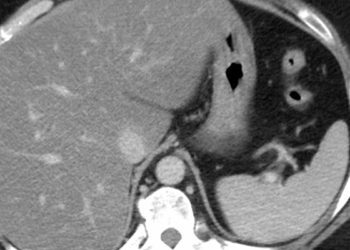STEMO (Stroke Emergency Mobile Unit) delivery of tPA reduces call-to-needle time in acute stroke patients
Key study points:
- Use of STEMO (stroke emergency mobile unit) in administering tPA (tissue plasminogen activator) to subjects with acute ischemic stroke reduces mean call-to-needle time in comparison to in-hospital treatment (62 minutes and 98 minutes, respectively).
- STEMO can deliver tPA with few safety concerns including hemorrhages.
- Currently, a controlled prospective study is taking place to further evaluate safety
Primer: Stroke is an acute injury of the neurologic system, caused either by ischemia or hemorrhage. Ischemic strokes account for ~87% of all strokes and their subtypes include thrombosis, embolism, and hypoperfusion. Symptoms can vary from abrupt and maximal at onset to fluctuating, or diffuse, non-focal. The use of tPA (tissue plasminogen activator) in thrombolytic therapy for acute ischemic stroke patients has been recommended in the window 3 hours of since symptom onset. Unfortunately, many patients do not receive tPA within the optimal time frame and thus risk decreased effectiveness of this therapy once in-hospital.
The PHANTOM-S (Pre-Hospital Acute Neurological Therapy and Optimization of Medical care in Stroke patients) study introduced an ambulance containing a CT (Computed Tomography) scanner, point-of-care laboratory, tele-radiology via mobile technology, and an emergency-trained neurologist on board, termed as the “STEMO (stroke emergency mobile unit)”. The aim was to reduce such delays in therapy by providing therapy in pre-hospital settings.
Background reading:
1. Intravenous fibrinolytic (thrombolytic) therapy in acute ischemic stroke: Therapeutic use.
2. Clinical diagnosis of stroke subtypes.
3. Tissue Plasminogen Activator For Acute Ischemic Stroke.
This [prospective study]: This pilot study portion of the prospective PHANTOM-S study was conducted in the emergency medical services system in Berlin, Germany during February to April 2011. STEMO was deployed to 208 suspected stroke emergencies determined via a pre-existing interview algorithm.
Of the 77 patients who gave informed consent to treatment with t-PA, a total of 53 patients (87%) had in-hospital confirmed diagnoses of stroke. Of the 45 patients (58%) whose prehospital diagnoses of acute stroke were confirmed in-hospital, 23 (51%) received tPA. Mean call-to-needle time was 62 minutes. Two patients (8%) treated with tPA developed intracranial hemorrhages within the first 7 days after stroke onset. No other adverse events were reported during the 7 days following.
In sum: The PHANTOM-S study demonstrates that stroke management in pre-hospital settings is more time-efficient (onset-to-needle time <90 minutes in 48% of patients vs. 11% of patients treated in 3 hour time window from the International Stroke Thrombolysis Registry) with minimal risk of adverse. Because this study was intended to examine feasibility and only treated a small group of patients, a controlled study with a larger sample size comparing STEMO and conventional in-hospital stroke management is ongoing. In addition, the resources and costs involved in this type of care will be compared to that of the pre-existing system. The data from such studies will contribute towards shifting the paradigm of care to pre-hospital settings, providing critical thrombolytic therapy in the earliest window possible.
Click to read the study in Neurology
By [EP] and [MS]
© 2012 2minutemedicine.com. All rights reserved. No works may be reproduced without written consent from 2minutemedicine.com. Disclaimer: We present factual information directly from peer reviewed medical journals. No post should be construed as medical advice and is not intended as such by the authors or by 2minutemedicine.com. PLEASE SEE A HEALTHCARE PROVIDER IN YOUR AREA IF YOU SEEK MEDICAL ADVICE OF ANY SORT.



![2MM: AI Roundup- AI Cancer Test, Smarter Hospitals, Faster Drug Discovery, and Mental Health Tech [May 2nd, 2025]](https://www.2minutemedicine.com/wp-content/uploads/2025/05/Untitled-design-350x250.png)
